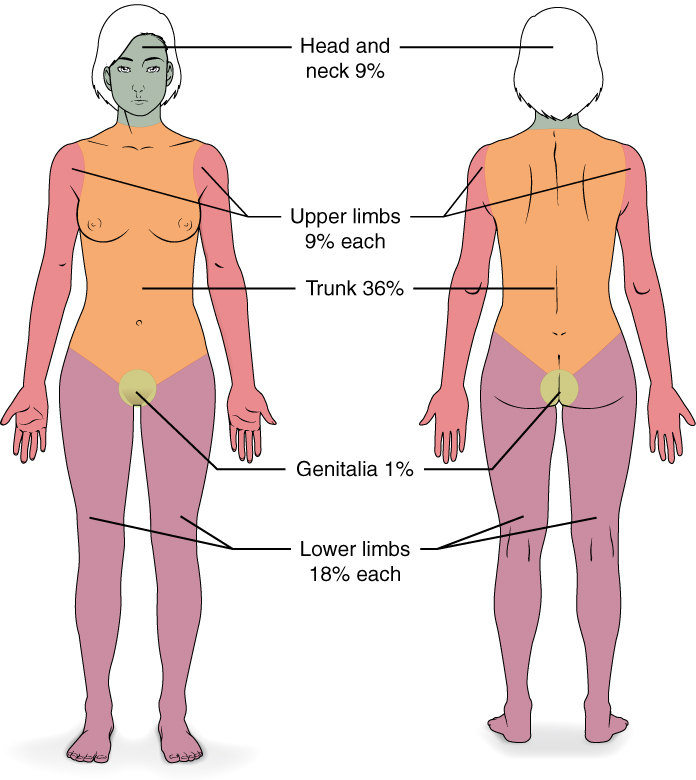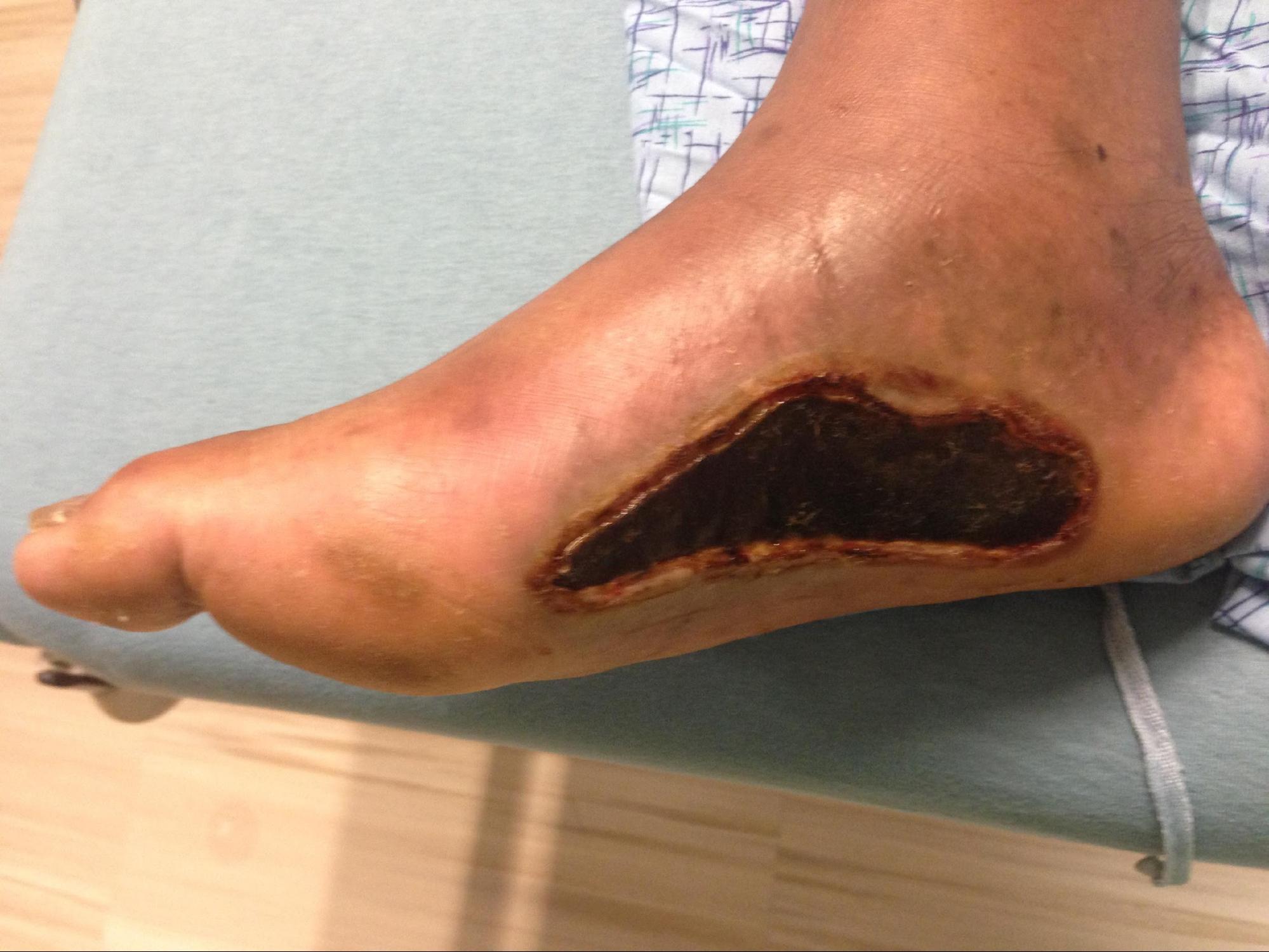[2]
Sahin C, Kaplan P, Ozturk S, Alpar S, Karagoz H. Treatment of partial-thickness burns with a tulle-gras dressing and a hydrophilic polyurethane membrane: a comparative study. Journal of wound care. 2019 Jan 2:28(1):24-28. doi: 10.12968/jowc.2019.28.1.24. Epub
[PubMed PMID: 30625045]
Level 2 (mid-level) evidence
[3]
Eyvaz K, Kement M, Balin S, Acar H, Kündeş F, Karaoz A, Civil O, Eser M, Kaptanoglu L, Vural S, Bildik N. Clinical evaluation of negative-pressure wound therapy in the management of electrical burns. Ulusal travma ve acil cerrahi dergisi = Turkish journal of trauma & emergency surgery : TJTES. 2018 Sep:24(5):456-461. doi: 10.5505/tjtes.2018.80439. Epub
[PubMed PMID: 30394501]
[4]
Wu YT, Chen KH, Ban SL, Tung KY, Chen LR. Evaluation of leap motion control for hand rehabilitation in burn patients: An experience in the dust explosion disaster in Formosa Fun Coast. Burns : journal of the International Society for Burn Injuries. 2019 Feb:45(1):157-164. doi: 10.1016/j.burns.2018.08.001. Epub 2018 Oct 12
[PubMed PMID: 30322737]
[5]
Stiles K. Emergency management of burns: part 2. Emergency nurse : the journal of the RCN Accident and Emergency Nursing Association. 2018 Jul:26(2):36-41
[PubMed PMID: 30095874]
[6]
Stiles K. Emergency management of burns: part 2. Emergency nurse : the journal of the RCN Accident and Emergency Nursing Association. 2018 Jul 3:():. doi: 10.7748/en.2018.e1815. Epub 2018 Jul 3
[PubMed PMID: 29969203]
[7]
Grammatikopoulou MG, Theodoridis X, Gkiouras K, Stamouli EM, Mavrantoni ME, Dardavessis T, Bogdanos DP. AGREEing on Guidelines for Nutrition Management of Adult Severe Burn Patients. JPEN. Journal of parenteral and enteral nutrition. 2019 May:43(4):490-496. doi: 10.1002/jpen.1452. Epub 2018 Oct 15
[PubMed PMID: 30320409]
[8]
Watson C, Troynikov O, Lingard H. Design considerations for low-level risk personal protective clothing: a review. Industrial health. 2019 Jun 4:57(3):306-325. doi: 10.2486/indhealth.2018-0040. Epub 2018 Aug 8
[PubMed PMID: 30089764]
[9]
Johnson SP, Chung KC. Outcomes Assessment After Hand Burns. Hand clinics. 2017 May:33(2):389-397. doi: 10.1016/j.hcl.2016.12.011. Epub 2017 Mar 1
[PubMed PMID: 28363303]
[10]
Beltran SL, Vilela RAG, de Almeida IM. Challenging the immediate causes: A work accident investigation in an oil refinery using organizational analysis. Work (Reading, Mass.). 2018:59(4):617-636. doi: 10.3233/WOR-182702. Epub
[PubMed PMID: 29733046]
[11]
Devinck F, Deveaux C, Bennis Y, Deken-Delannoy V, Jeanne M, Martinot-Duquennoy V, Guerreschi P, Pasquesoone L. [Deep alkali burns: Evaluation of a two-step surgical strategy]. Annales de chirurgie plastique et esthetique. 2018 Jun:63(3):191-196. doi: 10.1016/j.anplas.2018.03.008. Epub 2018 Apr 10
[PubMed PMID: 29653673]
[13]
Burn and Trauma Branch of Chinese Geriatrics Society, Ming J, Lei P, Duan JL, Tan JH, Lou HP, Di DY, Wang DY. [National experts consensus on tracheotomy and intubation for burn patients (2018 version)]. Zhonghua shao shang za zhi = Zhonghua shaoshang zazhi = Chinese journal of burns. 2018 Nov 9:34(11):E006. doi: 10.3760/cma.j.issn.1009-2587.2018.11.E006. Epub
[PubMed PMID: 30440148]
Level 3 (low-level) evidence
[14]
Mason SA, Nathens AB, Byrne JP, Ellis J, Fowler RA, Gonzalez A, Karanicolas PJ, Moineddin R, Jeschke MG. Association Between Burn Injury and Mental Illness among Burn Survivors: A Population-Based, Self-Matched, Longitudinal Cohort Study. Journal of the American College of Surgeons. 2017 Oct:225(4):516-524. doi: 10.1016/j.jamcollsurg.2017.06.004. Epub 2017 Jul 31
[PubMed PMID: 28774550]
[15]
Passaretti D, Billmire DA. Management of pediatric burns. The Journal of craniofacial surgery. 2003 Sep:14(5):713-8
[PubMed PMID: 14501335]



